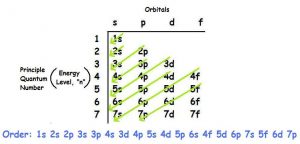
This molecule has regions of high electron density that consist of two single bonds and one double bond. Lone pair > triple bond > double bond > single bond lone pair > triple bond > double bond > single bondĬonsider formaldehyde, H 2CO, which is used as a preservative for biological and anatomical specimens ( Figure 7.14). One of these regions, however, is a lone pair, which is not included in the molecular structure, and this lone pair influences the shape of the molecule ( Figure 7.18). On the other hand, the ammonia molecule, NH 3, also has four electron pairs associated with the nitrogen atom, and thus has a tetrahedral electron-pair geometry. The electron-pair geometries will be the same as the molecular structures when there are no lone electron pairs around the central atom, but they will be different when there are lone pairs present on the central atom.įor example, the methane molecule, CH 4, which is the major component of natural gas, has four bonding pairs of electrons around the central carbon atom the electron-pair geometry is tetrahedral, as is the molecular structure ( Figure 7.17). The structure that includes only the placement of the atoms in the molecule is called the molecular structure. We differentiate between these two situations by naming the geometry that includes all electron pairs the electron-pair geometry. Molecular structure describes the location of the atoms, not the electrons. The electron-pair geometries shown in Figure 7.16 describe all regions where electrons are located, bonds as well as lone pairs. It is important to note that electron-pair geometry around a central atom is not the same thing as its molecular structure. Electron-pair Geometry versus Molecular Structure The bond angle is 180° ( Figure 7.15).įigure 7.16 The basic electron-pair geometries predicted by VSEPR theory maximize the space around any region of electron density (bonds or lone pairs). With two bonds and no lone pairs of electrons on the central atom, the bonds are as far apart as possible, and the electrostatic repulsion between these regions of high electron density is reduced to a minimum when they are on opposite sides of the central atom. The Lewis structure of BeF 2 ( Figure 7.15) shows only two electron pairs around the central beryllium atom. Other interactions, such as nuclear-nuclear repulsions and nuclear-electron attractions, are also involved in the final arrangement that atoms adopt in a particular molecular structure.Īs a simple example of VSEPR theory, let us predict the structure of a gaseous BeF 2 molecule. We should understand, however, that the theory only considers electron-pair repulsions. VSEPR theory predicts the arrangement of electron pairs around each central atom and, usually, the correct arrangement of atoms in a molecule. The electrostatic repulsion of these electrons is reduced when the various regions of high electron density assume positions as far from each other as possible.



The electrons in the valence shell of a central atom form either bonding pairs of electrons, located primarily between bonded atoms, or lone pairs. The VSEPR model assumes that electron pairs in the valence shell of a central atom will adopt an arrangement that minimizes repulsions between these electron pairs by maximizing the distance between them. Valence shell electron-pair repulsion theory (VSEPR theory) enables us to predict the molecular structure, including approximate bond angles around a central atom, of a molecule from an examination of the number of bonds and lone electron pairs in its Lewis structure. Figure 7.14 Bond distances (lengths) and angles are shown for the formaldehyde molecule, H 2CO.


 0 kommentar(er)
0 kommentar(er)
